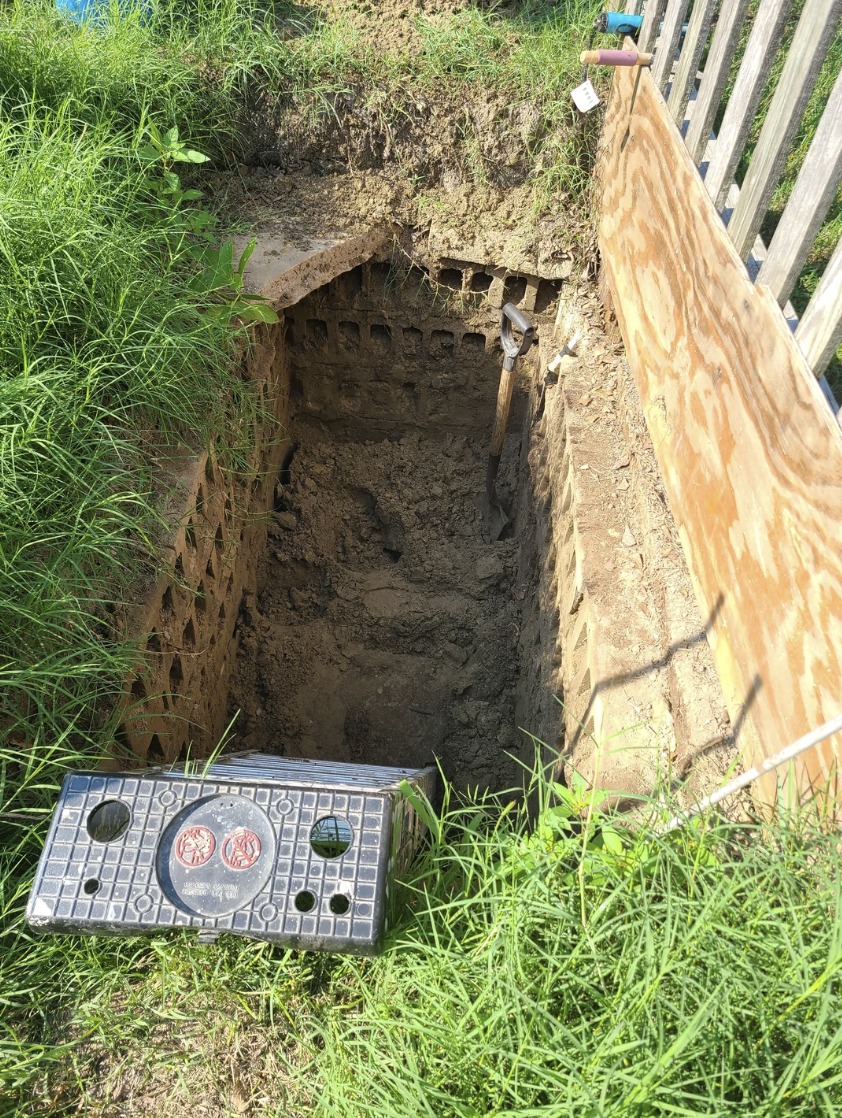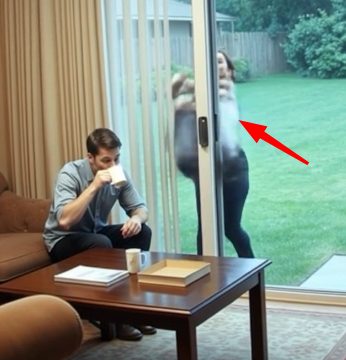What started out as a regular weekend turned into an unexpected journey through time, all thanks to a mysterious square indentation in the corner of my backyard. I had gone outside with simple plans—either plant some marigolds or finally set up that old birdbath collecting dust in the garage. But as I walked across the lawn, something caught my eye. There, tucked away in a spot I rarely paid attention to, was a perfectly square dip in the ground. I couldn’t remember ever seeing it before, which instantly piqued my curiosity.

I walked over and knelt down, brushing the dirt away with my hands. I expected to find a rock, a buried toy, or maybe some old trash, but what I uncovered was something much more intriguing—it was solid and clearly man-made. The more I dug, the more unusual it became. The top of the structure was covered with concrete slabs, wired together with chicken wire. It was odd, even a little eerie. As I kept going, it became clear this wasn’t just a random construction project or some makeshift storage. I had stumbled upon a hidden cistern—something people used generations ago to collect and store water.
This structure wasn’t small either. It measured around 36 inches wide and 72 inches long, with concrete blocks stacked five layers deep. The first layer started just a foot below the surface, which meant someone had gone through quite a bit of effort to build it. The precise construction and the quality of the materials told me this wasn’t a quick weekend project. This had been built with intention.
At first, I thought maybe it was an old outhouse pit, but that didn’t make much sense. It was too well-made, too clean, and too exact for waste disposal. Then I remembered the stories my grandmother used to tell me about her childhood on the farm. Back then, they didn’t have plumbing. Water came from rain barrels or wells, and every drop was precious. Suddenly, it all clicked. My house was built in the early 1900s, a time when running water wasn’t standard. This cistern was likely an essential part of daily life—a place to store water when the well ran dry or became unreliable.
I considered other possibilities. Could it have been a septic tank? Possibly, but the design didn’t match. Septic systems are usually deeper, and they don’t typically have the kind of careful craftsmanship I saw here. Maybe a root cellar or food storage pit? That seemed unlikely too—it wasn’t deep enough and lacked the ventilation needed for preserving produce. Some might guess it was a dry well, but that didn’t fit either. This thing wasn’t meant to drain—it was built to hold something. Most likely, water.
The more I thought about it, the more I felt connected to the people who had once lived here. They didn’t have the conveniences we enjoy today—no running water, no central heating, no modern plumbing. Every part of their property had to serve a purpose. Looking down into that pit, I could almost see them—hauling water, building block by block, trying to make life work with what they had.
And that’s what struck me most. This wasn’t just a hole in the ground. It was a window into the past. It reminded me that the land beneath our feet isn’t just dirt—it’s a timeline. Every rock, every buried slab tells a story. Someone once spent days, maybe weeks, building this cistern. Not for beauty or aesthetics, but out of necessity. They built it to survive.
It made me think about how often we take our homes for granted. We walk on floors that others laid down with their bare hands. We live on land that once meant everything to someone. They raised families here, cooked meals, told stories by candlelight. And maybe, just maybe, they stood in the exact same spot I did, looking at that cistern and feeling grateful for the water it held.
So the next time you dig a hole in your backyard and stumble across something unexpected—a strange stone, a patch of bricks, or even a long-forgotten pit—don’t dismiss it as junk. It might be more than that. It could be a piece of someone’s life, a remnant of a time when survival depended on creativity, hard work, and hope.
That small discovery in my yard gave me more than a mystery to solve. It offered me a connection to the past—a tangible link to the people who came before me. And in a world moving so fast, finding that kind of perspective might be one of the most valuable things of all.





